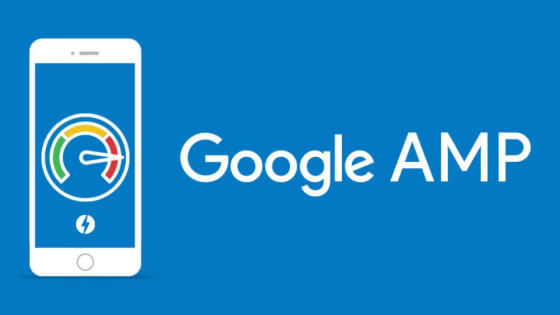Even though Google introduced AMP almost seven years ago, it’s still going around as a hot topic in the SEO Agency and developer community.
However, the announcement also had a fair share of questions for good reasons. What exactly is AMP? Do you think it’s too far from what we’ve done on the internet for two decades?
In today’s blog, YellowFin Digital, the most trusted SEO company in Corpus Christi, will answer all your questions regarding SEO.
What is AMP?
Google has made it very clear that they want to give its users a fast and smooth experience. They want to make sure that when people land on their search engine, they do not leave right away because the site is slow or unresponsive. This is why they have devised a solution called AMP or Accelerated Mobile Pages.
Accelerated Mobile Pages (AMP) is an open-source initiative led by Google’s AMP Project that aims to speed up the mobile web. The idea behind this project is to make sure that websites are fast and easy to navigate, even on slow networks, by having them load instantly.
AMP pages are:
- Pre-rendered: The AMP version of your page is rendered on Google’s servers and then cached for use on search result pages. This means a user clicks on an AMP link load quickly and reliably, even on a slow network connection.
- Easy to build: AMP HTML is a simple set of building blocks that you can put together to create pages that look and feel like regular web pages but load instantly.
- SEO friendly: Because they are pre-rendered, AMP pages are indexed just like other web pages by search engines like Google. This is why every SEO company has started recommending their clients develop AMP pages for better search results.
How Does Google AMP Work?
AMP pages have three key components:
- The AMP HTML code that’s placed on a page
- A cache manifest file that lists all the assets (images, scripts, etc.) used in the page and validates the pages
- A JavaScript file that helps render and load the content faster
AMP pages are built using AMP HTML, a special version of HTML designed for mobile devices, and the Google AMP Cache, which stores AMP pages in a separate cache from the rest of your site.
When you build an AMP page, it’s hosted on Google’s servers and served through the Google AMP Cache. This means that when someone views an AMP page, they’re viewing a cached version of the page rather than your original content on your server.
The purpose behind this technology is to improve load times by stripping out all unnecessary elements, such as JavaScript and images so that users can access only what they need immediately.
Advantages of AMP Pages
Faster Page Load Times

First and foremost, Google AMP is designed to load pages faster. The reason for this is that AMP pages are stripped of everything unnecessary – things like ads and tracking scripts. This cleans up the code, making it easier for search engines to crawl and index AMP pages and for users to load them.
According to Google, the average time for an AMP page to load is less than a second. This means the users land on your webpage almost instantly as they click on your Google search result, which says a lot about your engagement and user experience. This is also an important reason why your SEO company suggests converting the non-AMP to AMP pages for better search discoverability.
No More Waiting for the Page Elements to Load
AMP pages load quickly because they use fewer resources than regular HTML pages. No third-party scripts or images are loaded when you visit an AMP page. So there’s no waiting time for those elements to load before you can see the entire content on your page.
If your website has slow-loading pages, it’s high time you contact a good SEO agency in Corpus Christi to fix the issue.
Better Security
Security issues are not just a problem with mobile sites; they’re a problem with the web. AMP pages help with security because they’re served over HTTPS by default, so users don’t have to worry about their data being compromised when using your site on mobile devices.
Improved Discoverability
When users search for something on Google, they’ll see results for both standard and accelerated versions of your page on the search results page. This means you’ll get more visibility for your content on Google when you use AMP pages.
Reduced Bounce Rate
Google AMP is designed to make sure that your page loads instantly. When visitors can quickly access your site from their mobile device, they’re more likely to stay on your page and browse other content on it as well. This reduces bounce rate, which will help boost your organic search engine rankings.
Why Does SEO Company Recommend AMP for SEO?
There are several ways through which AMP can help improve your SEO.

1. You need AMP for SEO mainly because of its fast-loading capability.
It’s no secret that Google wants its users to have a good experience when they visit its search engine results pages (SERPs), so it’s constantly looking for ways to rank the web pages with faster loading times. So with your pages optimized to load faster, you’ll have an advantage over the other non-AMP pages.
2. Google prefers to rank mobile-optimized pages, which is another boon for websites with AMP.
You can also notice that AMP pages are highlighted on the Google search results with a lightning bolt icon to indicate to the user that it’s an AMP.
3. AMP pages get fewer bounces.
According to Corpus Christi SEO experts, one of the top reasons why people leave a website is its slow loading time. And Google goes as far as to punish websites that load slowly.
So when you have a fast-loading web page optimized for mobile phones, your users can view your content quicker — no matter what device they’re using. This considerably reduces your bounce rate, which means Google views your AMP as providing valuable content to the users comparatively, which can boost your search engine ranking.
How Does the SEO Company Optimize AMP Pages?
AMP pages have the potential to rank high on Google search results, but there are a lot of people out there who aren’t implementing them correctly. So here are some tips that are pretty simple but will improve your AMP pages:
Use Structured Data Tags
When you use structured data tags, it assists search engines to decipher the content of your page so that it can be more easily found in search results. For example, you can use structured data tags to add schema.org markup to your AMP page, which makes it easier for search engines to find important information about your page.
Use AMP Components from Google
Google offers several pre-built AMP components that contain common elements. You can use these components on your AMP pages without worrying about coding them yourself — they come with all the necessary markup already included in the code. You can use these components to create mobile-optimized web pages.
Develop AMP HTML Pages
AMP HTML is a subset of HTML commonly used to build AMP. It offers a streamlined structure, which helps you optimize your website to load quickly on mobile devices. It also includes built-in features like tap targets and navigation, which help you create fast and accessible mobile experiences.
Optimize Your Images
Another critical step to building AMP is to optimize your images so that they don’t take too much bandwidth when loading on a mobile device. Images are one of the heaviest elements on a website if it’s not optimized properly. And it will slow down your site drastically and negatively affect its ranking in search engines. So when you cut down the size of the images, it helps to load the web pages even faster.
These are just a few things you need to optimize your website and build AMP. If this feels like a lot, you can get the help of an expert SEO company to convert your non-AMP pages to AMP.
Start Building AMP Pages Now
The first step to improving your SEO is to optimize your AMP pages. There are many ways to do this, but it’s best to start with a template that already has the basics of a well-optimized AMP page.
If you don’t have time to build your AMP pages from scratch, then consider hiring a reliable SEO company to do it for you. There are lots of agencies that specialize in building AMP pages and they can make sure that your site is optimized with fast-loading pages ready to use.
At YellowFin Digital, we have SEO specialists and developers who work together as a team to help SMBs leverage the power of AMP — and climb high on the search engine rankings. We help you build a fast and secure website with AMP that gets found in search, supports compelling content, and converts readers into customers. And we can do the same for you. Reach out to our experts offering SEO services in Corpus Christi today.



